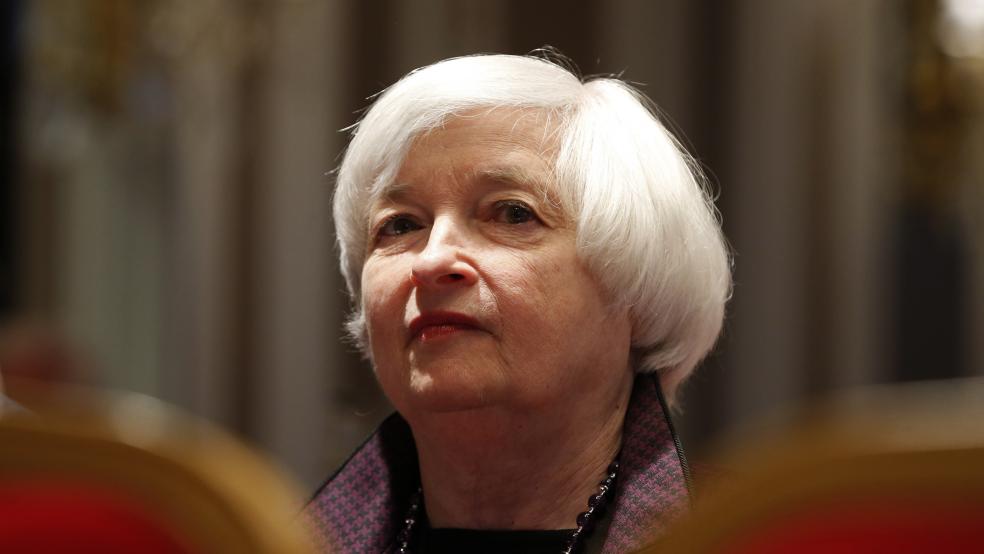WASHINGTON (Reuters) - Federal Reserve Chair Janet Yellen has said the tenor of economic data will decide when the U.S. central bank raises interest rates. Surprisingly, a data analysis based on Yellen's own priorities points to a rate increase by the end of this year.
Yellen has cautioned that the economic models built for policymakers amount to mere guideposts in a complicated decision-making process.But she also has placed special emphasis on a set of equations for what she dubbed in a November 2012 speech as "optimal policy" or "optimal control." The equations mimic the churning of a vast economy and project a rate path that gives equal importance to meeting the Fed's twin goals of maximum employment and stable prices. Last Friday, Fed economists said in a note that they had updated the model, and the new version suggests the central bank should tighten policy enough to have the federal funds rate average 0.33 percent in the October-December period of this year.The Fed has kept the rate, which governs overnight lending between banks, in a zero to 0.25 percent range since late-2008.However, it's clear the Fed is not following this model.Several top officials have said they are not likely to bump rates up until the middle of next year, and to meet the 0.33 percent average would require an extremely sharp hike at the Fed's next and last meeting of the year on Dec. 16-17. Even the note's authors are wary of policymakers leaning too heavily on their calculation because economic models by nature oversimplify a complex world. The assumptions that go into them can easily prove to be wrong. "(Optimal control) paths should be treated with appropriate caution as a guide to actual policy," Fed economists Flint Brayton, Thomas Laubach and David Reifschneider wrote. ((http://www.federalreserve.gov/econresdata/notes/feds-notes/2014/optimal-...))Yellen made waves in the 2012 speech by describing a computer simulation of optimal policy that suggested waiting to raise the fed funds rate until around the first half of 2016 to more quickly push down unemployment. Under this plan, inflation would be allowed to run above target for several years. But as it turned out, the jobless rate came down more quickly than Yellen or most anyone else anticipated, while inflation has persisted well below the Fed's 2 percent target.That has puzzled economists as tightening labor markets are supposed to push prices higher. In a second note, another group of Fed economists said they had tweaked the Fed's flagship economic model to make inflation less sensitive to changes in labor market slack.Brayton, Laubach and Reifschneider re-ran Yellen's 2012 computer simulation with minor changes and using the updated flagship model, which spit out an earlier liftoff for rates.While they did not release a full methodology of the simulation, earlier this month the Fed responded to a Freedom of Information Act request from Reuters by releasing the computer programs Yellen used to calculate optimal policy in her 2012 speech, which was made when she was the Fed's vice chair.Those documents can be downloaded at the following links:http://www.reuters.com/investigates/special-report/assets/eviews/2014-35...http://www.reuters.com/investigates/special-report/assets/eviews/reuters...(The story is refiled to fix link at bottom of story.) (Reporting by Jason Lange; Editing by Tim Ahmann and Paul Simao)Yellen's 'optimal' model calls for rate hike this year, in theory

CHARLES PLATIAU



